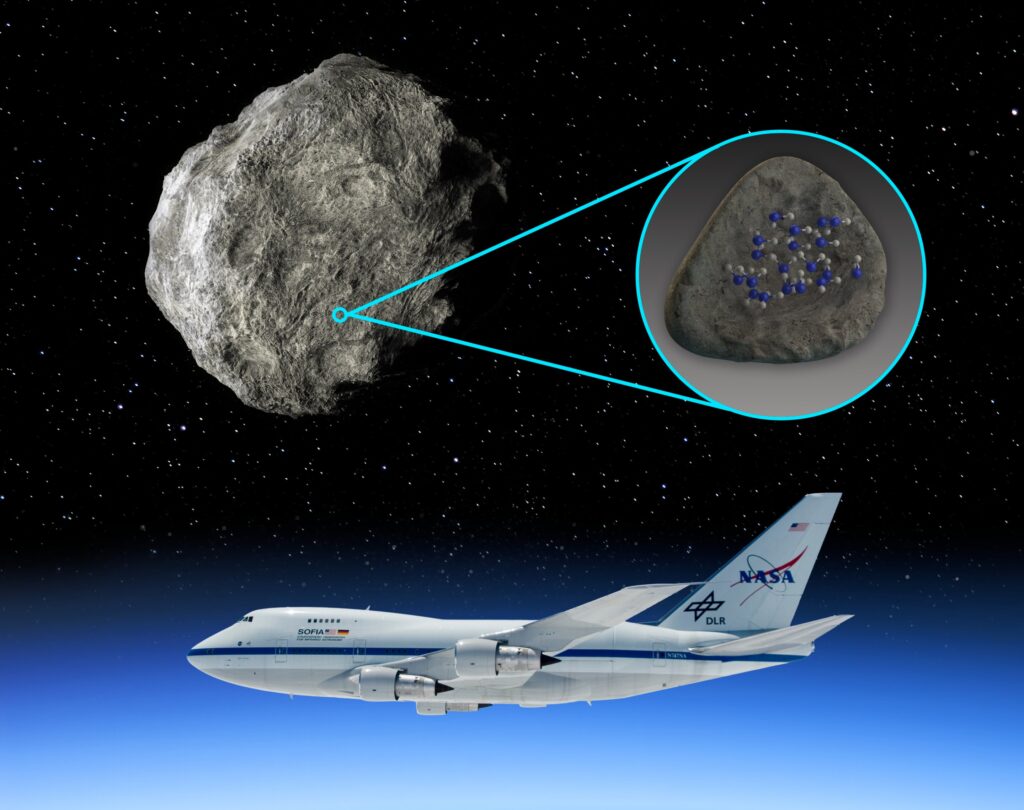Astronomers have found water molecules on asteroids for the first time. Thanks to the research of the SOFIA airborne observatory, they hope to understand how this substance is distributed throughout the solar system and where to look for it next.

Studying asteroid composition
The SOFIA Stratospheric Observatory is a joint project of NASA and the German Space Agency. Actually, it is a telescope mounted on an aircraft. It was completed last year, but its data is still helping scientists make discoveries. In particular, researchers from DLR Southwest Research Institute recently detected water molecules on the surface of an asteroid for the first time.
The scientists examined four silicate-rich asteroids using the FORCAST instrument and identified mid-infrared emission spectra indicating molecular water on two of them.
Asteroids are the remnants of the planet formation process, so their composition varies depending on where they formed in the solar nebula. The distribution of water on asteroids is of particular interest, as it may shed light on how water came to Earth.
Anhydrous, or dry, silicate asteroids form close to the Sun, while icy asteroids form further away. Understanding where asteroids formed and their composition allows us to understand how materials were distributed and evolved in the nebula surrounding the young Sun.
The distribution of water in the solar system will provide insight into the distribution of water in other star systems. And since this substance is essential for biochemical processes on Earth, it will determine where to look for alien life.
Water “bound” to minerals
In addition to asteroids, the SOFIA telescope detected water molecules in one of the largest craters in the Moon’s southern hemisphere. Previous observations of our satellite and asteroids have detected some form of hydrogen, but could not distinguish water from its close chemical relative, hydroxyl.
“We have discovered a feature that can be definitely attributed to molecular water on the asteroids Iris and Massalia. Judging by the intensity of the spectral bands, the amount of water on the asteroid corresponds to the amount of water on the sunlit side of the Moon,” says Dr Anicia Arredondo, lead author of the paper on the discovery. “Similarly, water on asteroids can be bound to minerals and also adsorbed on silicate glass.”
Data from the two fainter asteroids, Parthenope and Melpomene, were too noisy to draw a definitive conclusion. The FORCAST instrument is apparently not sensitive enough to detect the spectral feature of water, if present. However, with these results, the team will get access to NASA’s James Webb Space Telescope, the world’s leading infrared space telescope, to use its precise optics and excellent signal-to-noise ratio to study more objects.
Source: phys.org

